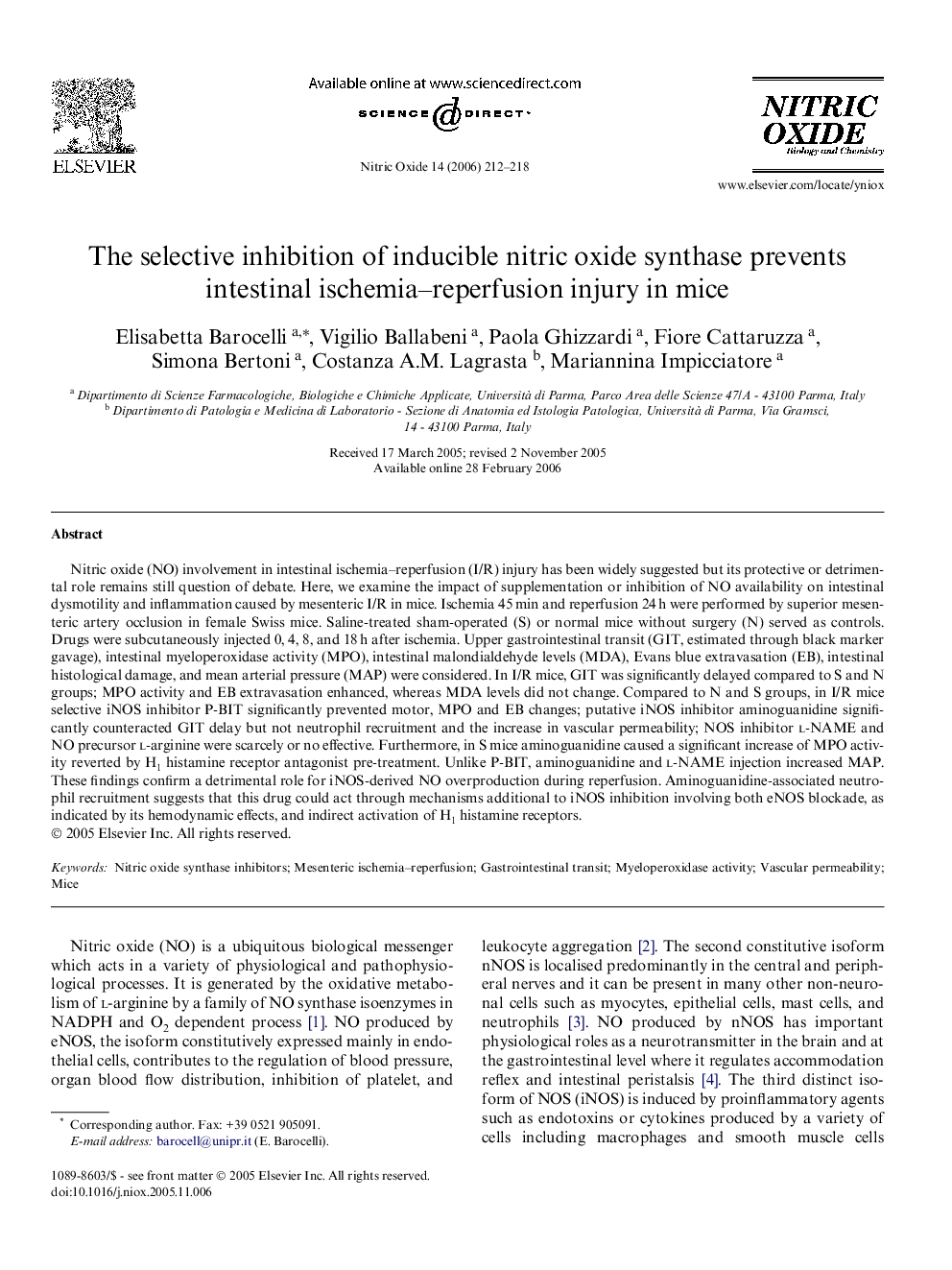| کد مقاله | کد نشریه | سال انتشار | مقاله انگلیسی | نسخه تمام متن |
|---|---|---|---|---|
| 2002215 | 1066099 | 2006 | 7 صفحه PDF | دانلود رایگان |
عنوان انگلیسی مقاله ISI
The selective inhibition of inducible nitric oxide synthase prevents intestinal ischemia-reperfusion injury in mice
دانلود مقاله + سفارش ترجمه
دانلود مقاله ISI انگلیسی
رایگان برای ایرانیان
کلمات کلیدی
موضوعات مرتبط
علوم زیستی و بیوفناوری
بیوشیمی، ژنتیک و زیست شناسی مولکولی
زیست شیمی
پیش نمایش صفحه اول مقاله

چکیده انگلیسی
Nitric oxide (NO) involvement in intestinal ischemia-reperfusion (I/R) injury has been widely suggested but its protective or detrimental role remains still question of debate. Here, we examine the impact of supplementation or inhibition of NO availability on intestinal dysmotility and inflammation caused by mesenteric I/R in mice. Ischemia 45Â min and reperfusion 24Â h were performed by superior mesenteric artery occlusion in female Swiss mice. Saline-treated sham-operated (S) or normal mice without surgery (N) served as controls. Drugs were subcutaneously injected 0, 4, 8, and 18Â h after ischemia. Upper gastrointestinal transit (GIT, estimated through black marker gavage), intestinal myeloperoxidase activity (MPO), intestinal malondialdehyde levels (MDA), Evans blue extravasation (EB), intestinal histological damage, and mean arterial pressure (MAP) were considered. In I/R mice, GIT was significantly delayed compared to S and N groups; MPO activity and EB extravasation enhanced, whereas MDA levels did not change. Compared to N and S groups, in I/R mice selective iNOS inhibitor P-BIT significantly prevented motor, MPO and EB changes; putative iNOS inhibitor aminoguanidine significantly counteracted GIT delay but not neutrophil recruitment and the increase in vascular permeability; NOS inhibitor l-NAME and NO precursor l-arginine were scarcely or no effective. Furthermore, in S mice aminoguanidine caused a significant increase of MPO activity reverted by H1 histamine receptor antagonist pre-treatment. Unlike P-BIT, aminoguanidine and l-NAME injection increased MAP. These findings confirm a detrimental role for iNOS-derived NO overproduction during reperfusion. Aminoguanidine-associated neutrophil recruitment suggests that this drug could act through mechanisms additional to iNOS inhibition involving both eNOS blockade, as indicated by its hemodynamic effects, and indirect activation of H1 histamine receptors.
ناشر
Database: Elsevier - ScienceDirect (ساینس دایرکت)
Journal: Nitric Oxide - Volume 14, Issue 3, May 2006, Pages 212-218
Journal: Nitric Oxide - Volume 14, Issue 3, May 2006, Pages 212-218
نویسندگان
Elisabetta Barocelli, Vigilio Ballabeni, Paola Ghizzardi, Fiore Cattaruzza, Simona Bertoni, Costanza A.M. Lagrasta, Mariannina Impicciatore,